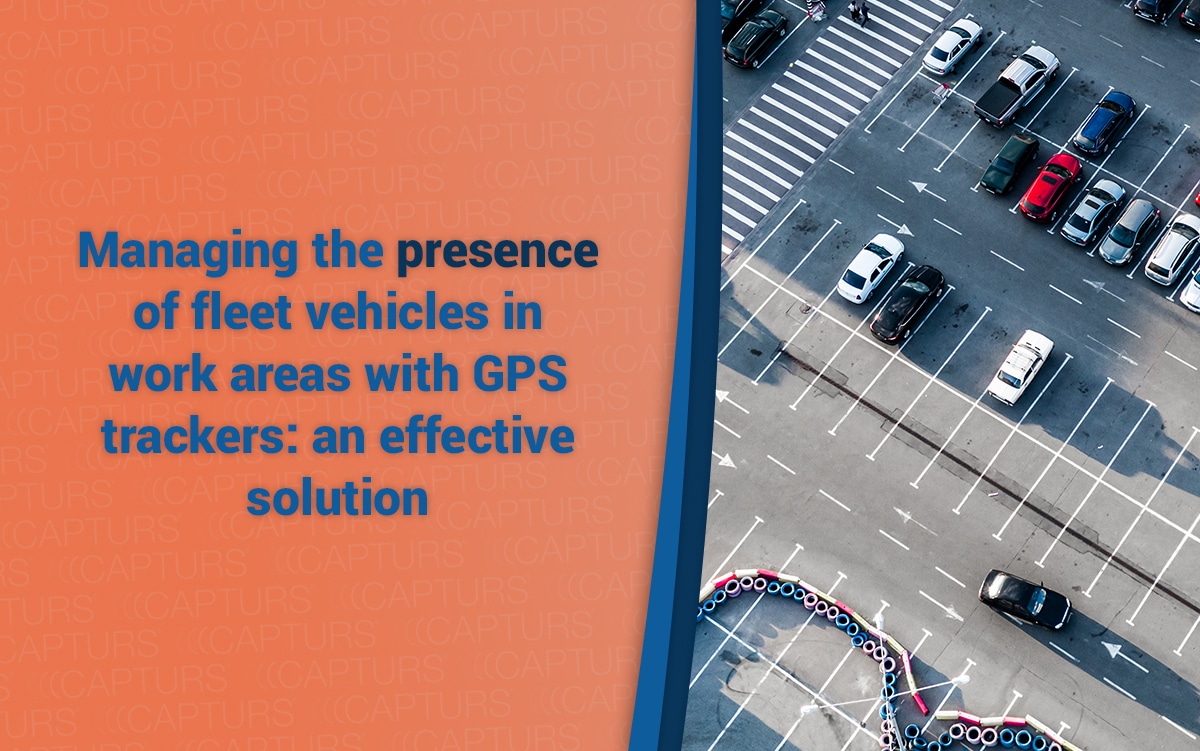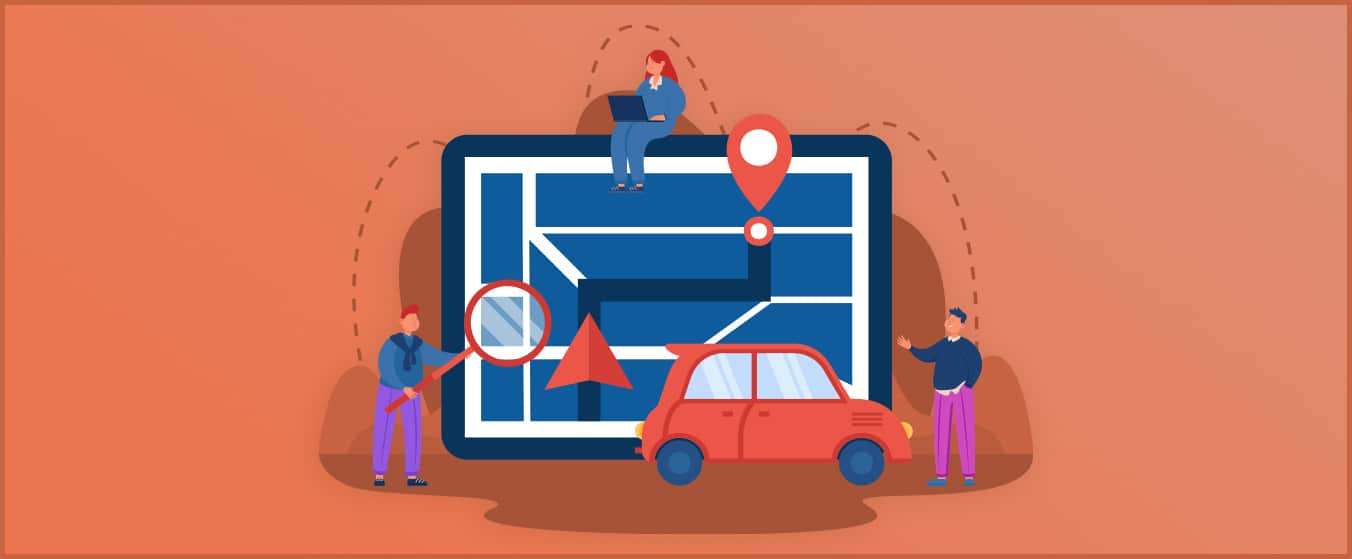Managing the presence of fleet vehicles in work areas with GPS trackers: an effective solution

Fleet monitoring is an increasingly important issue for companies that own one or more fleets of vehicles. The use of GPS trackers makes it possible to monitor in real time the location of vehicles, the activities carried out with them and to verify the presence of vehicles.
Indeed, knowing where the vehicles are and how they are used is crucial for companies. This allows them to optimize routes, work schedules and vehicle operating costs. It can also detect unauthorized use or fraud, as well as ensure that employees are using business vehicles for their assigned tasks.
The purpose of this article is to show you the benefits and features of monitoring vehicle fleets with GPS trackers, focusing on presence verification. We will see why it is important to verify the presence of vehicles, how GPS trackers can be used to do so and what the prospects are for the future.
Why attendance verification is important for businesses
Suivi des activités des employés : s’assurer que les employés utilisent les véhicules professionnels pour les tâches qui leur sont confiées
One of the main reasons why attendance verification is important to businesses is that it allows for the tracking of employee activities. By using GPS trackers to monitor work vehicles, employers can ensure that employees are using the vehicles for their assigned tasks. This limits unprofessional use of vehicles and ensures that employees are using vehicles effectively and efficiently, during work hours.
In addition, by having an accurate picture of vehicle locations and movements, employers can optimize employee routes and work schedules, saving time and money. It can also help employers identify employees who are not following driving rules or misusing vehicles.
Fraud Prevention: Detecting Unauthorized Use of Business Vehicles
Presence verification is also important for companies to prevent fraud. By using GPS trackers to monitor business vehicles, employers can detect unauthorized use of vehicles. This can include personal use, use for illegal activities, or use that is not related to the business.
By detecting unauthorized vehicle use, employers can take steps to prevent it from happening again. This can include implementing stricter driving rules, increased employee monitoring, or even terminating employment contracts.
Attendance verification is also important for companies because it ensures that employees are not using vehicles for illegal activities, this allows companies to limit legal and financial risks in the event of a lawsuit. Finally, it allows companies to maintain a good reputation by ensuring that employees are using business vehicles appropriately.

Cost optimization: avoid costs related to unused or misused vehicles
Attendance verification is also important for businesses because it helps optimize costs. By using GPS trackers to monitor business vehicles, employers can identify vehicles that are not being used or are being misused. This can include vehicles that sit unused for long periods of time, or vehicles that are used for unnecessary trips.
By identifying these vehicles, employers can take steps to reduce costs. This may include selling unused vehicles, reducing unnecessary trips, or rotating vehicles to avoid premature wear and tear.
In addition, analysis of vehicle geolocation data allows companies to implement travel strategies to reduce fuel and vehicle maintenance costs, as well as scheduling strategies to optimize routes and schedules.
Finally, attendance verification allows companies to ensure that vehicles are being used effectively and efficiently, reducing operational costs and improving overall business efficiency.

How GPS trackers can verify the presence of vehicles
Real-time tracking: real-time location of vehicles
GPS trackers allow to verify the presence of vehicles by providing real-time tracking of their location with a history of trajectories. GPS trackers are devices that are installed on vehicles and send information about their location to a real-time tracking platform. Employers can then use this information to track vehicle movements in real time.
By using real-time tracking, employers can ensure that vehicles are being used for their assigned tasks. This ensures that employees are not deviating from their intended route, and quickly detects any unauthorized use of vehicles.
In addition, real-time tracking allows employers to ensure that vehicles are being used effectively and efficiently. It verifies that employees are taking the shortest and least expensive routes, and detects unnecessary trips.
Finally, real-time tracking allows employers to react quickly when needed, such as when a vehicle is stolen or breaks down. Employers can then take appropriate action to manage these situations efficiently.
Alerts and Notifications: Notifications of unauthorized movement or exceeding time or area limits
GPS trackers also allow you to verify the presence of vehicles using alerts and notifications. Employers can set up alerts to notify them of unauthorized movement, time or area violations.
Unauthorized travel alerts allow employers to quickly detect unauthorized use of work vehicles, such as if an employee is using a work vehicle for personal activities.
Time or area limit alerts allow employers to ensure that vehicles are being used effectively and efficiently. Employers can set up time limits to ensure that vehicles are used only during work hours, or area limits to ensure that vehicles do not leave a defined geographic area.
Finally, speeding notifications allow employers to ensure that employees stay within the speed limit and avoid accidents and ticketing costs.
In summary, GPS trackers allow for the verification of vehicle presence by using alerts and notifications to detect unauthorized use and exceeding time or area limits. This allows employers to ensure that vehicles are being used effectively and efficiently, and to react quickly when needed.

Tracking history: access to historical data for further analysis
GPS trackers can also verify vehicle presence by recording historical tracking data. Employers can access this historical data for later analysis to better understand employee driving patterns and identify opportunities for optimization (on-time performance, repeated lateness, etc.).
Historical tracking data can include information such as driving routes, distances traveled, driving times, average speeds, stopping times, and departure and arrival locations. This information can be used to assess employee efficiency, identify opportunities for route optimization and reduce fuel costs.
Using this historical tracking data, employers can also identify employees who are using vehicles inappropriately, such as drivers who drive at high speeds or take inefficient routes. This allows employers to take action to correct these behaviors and improve traffic safety.
In short, GPS trackers allow for vehicle presence verification by recording a travel tracking history. Employers can access this historical data for further analysis to better understand employee driving habits and identify opportunities for optimization. This allows employers to take action to correct inappropriate behavior and improve traffic safety.
Presence reports: generate vehicle presence reports for further analysis
GPS trackers can also verify vehicle presence by generating presence reports. These reports can include information such as arrival and departure times, attendance times, attendance locations and downtime. These reports can be used to track employee activities and verify that vehicles are being used for their assigned tasks, but also to calculate the time worked by each employee.
Employers can use these reports to evaluate vehicle usage and identify trends. For example, an employer can use attendance reports to identify the days and times when vehicles are used the most, or the locations where vehicles spend the most time. This allows employers to optimize routes and work schedules to reduce fuel costs and increase employee efficiency.
Employers can also use these reports to detect fraud and unauthorized use of work vehicles. For example, an employer can use attendance reports to identify employees who use vehicles for personal activities, such as travel to vacation spots or personal appointments.
GPS trackers can verify the presence of vehicles by generating attendance reports. These reports can include information such as arrival and departure times, attendance times, attendance locations and stop times. Employers can use these reports to track employee activities, assess vehicle usage and identify trends, detect fraud and unauthorized use of work vehicles. This allows employers to optimize routes and work schedules to reduce fuel costs and increase employee efficiency.

